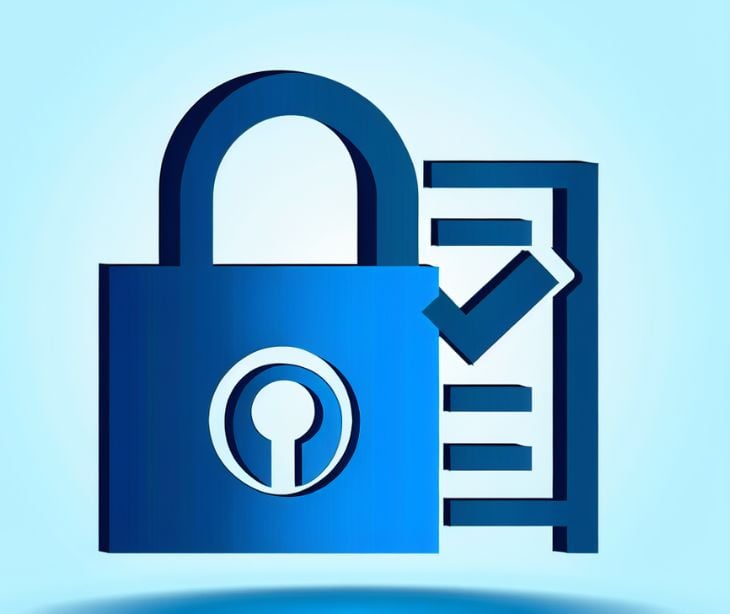
Developing a HIPAA compliant training policy is essential for ensuring that all employees are aware of and adhere to the standards set by the Health Insurance Portability and Accountability Act (HIPAA).
HIPAA’s training requirements mandate that “a covered entity must train all members of its workforce on the policies and procedures with respect to protected health information required by this subpart and subpart D of this part, as necessary and appropriate for the members of the workforce to carry out their functions within the covered entity" (§164.530(b)(1) of the Privacy Rule). In addition, a covered entity or business associate must “implement a security awareness and training program for all members of its workforce including management,” (§164.308(a)(5) of the Security Rule).
Below is a step-by-step guide to help you develop an effective HIPAA compliant training policy:
Understand HIPAA requirements
- HIPAA overview: Familiarize yourself with HIPAA regulations, including the Privacy Rule, Security Rule, and Breach Notification Rule.
- Training requirements: Understand that HIPAA requires covered entities and business associates to train all workforce members on HIPAA policies and procedures relevant to their job functions.
Go deeper: Understanding and implementing HIPAA rules
Define the scope
- Identify employees: Determine who needs to be trained, including full-time employees, part-time employees, contractors, and any other relevant personnel.
- Training content: Identify what specific HIPAA rules and policies each group needs to be trained on based on their job functions.
Develop training materials
- Customized training: Create training materials that are specific to your organization’s policies and procedures.
- Core topics: Ensure the training covers key topics such as:
- The importance of HIPAA and its impact on the organization.
- Understanding protected health information (PHI).
- Privacy and Security Rules.
- Patient rights and how to handle PHI.
- Breach notification and reporting procedures.
- Role-based access and minimum necessary standard.
- Best practices for data security and preventing unauthorized access.
Training methods
- In-person training: Conduct live training sessions for interactive learning and immediate Q&A.
- Online modules: Offer online training modules for flexibility and consistent delivery of information.
- Regular updates: Provide periodic refresher training sessions and updates on new HIPAA regulations or organizational policies.
Establish a training schedule
- Initial training: Ensure all new hires receive HIPAA training within a reasonable time after starting.
- Ongoing training: Schedule regular training sessions (e.g., annually) to reinforce knowledge and update on any changes.
- As-needed training: Provide additional training as needed, such as after a breach or when policies change.
Documentation and record-keeping
- Training records: Maintain records of all training sessions, including dates, participants, and content covered.
- Attestation: Have employees sign an acknowledgment form confirming they have received and understood the training.
See also: Guidelines for HIPAA compliant documentation and record retention
Evaluation and improvement
- Assess effectiveness: Use quizzes, surveys, and feedback forms to evaluate the effectiveness of the training program.
- Continuous improvement: Regularly review and update training materials and methods based on feedback and changes in HIPAA regulations.
Assign responsibilities
- HIPAA officer: Appoint a HIPAA Privacy and Security Officer responsible for overseeing the training program.
- Departmental roles: Ensure departmental heads are involved in promoting and monitoring compliance within their teams.
Incident response training
- Breach response: Train employees on how to recognize and report a data breach.
- Incident handling: Ensure there are clear procedures for handling incidents and mitigating damage.
See also: The 6 steps of incident response
Policy review and updates
- Regular review: Periodically review and update the training policy to ensure it remains relevant and compliant with current laws and organizational practices.
- Legal and regulatory updates: Stay informed about changes in HIPAA regulations and update training materials accordingly.
See also: HIPAA Compliant Email: The Definitive Guide
FAQs
What is HIPAA?
HIPAA stands for the Health Insurance Portability and Accountability Act, a federal law enacted in 1996. It sets national standards for the protection of individuals' medical records and other personal health information (PHI).
Go deeper: What is HIPAA?
Who needs to complete HIPAA training?
All employees, contractors, volunteers, and any personnel who have access to PHI must complete HIPAA training.
Related:
Who is responsible for overseeing HIPAA training?
The HIPAA Privacy and Security Officer is responsible for developing, implementing, and overseeing the HIPAA training program.
Subscribe to Paubox Weekly
Every Friday we'll bring you the most important news from Paubox. Our aim is to make you smarter, faster.




